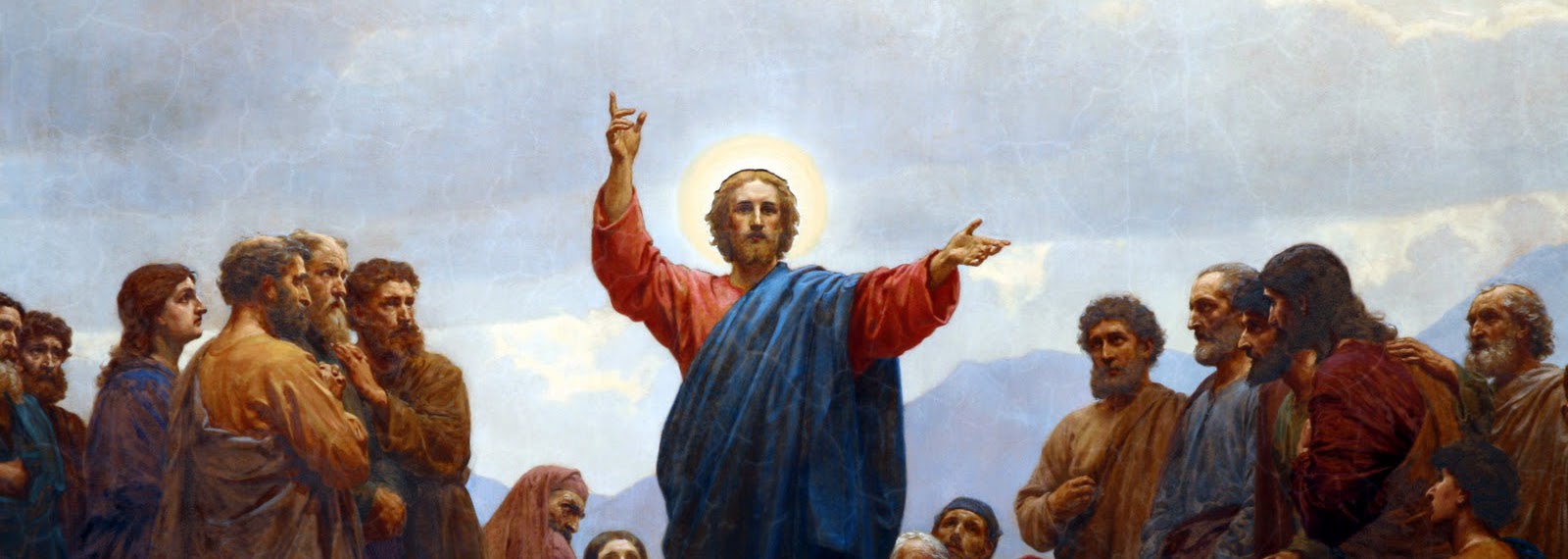Gracious God, take our minds and think through them;
take our hands and work through them;
take our hearts and set them on fire.
Amen.
Today’s Gospel reading omits the first four verses of chapter 17, which set the stage for the disciples cry to Jesus to increase their faith.
In vv. 1-4, Jesus told the disciples that discipleship is more demanding than they imagined: if you cause another to stumble in faith, it would be better if a millstone is hung around your neck and you are thrown into the sea; and if someone sins against you and then repents, you must forgive them – and not just once, but continually.
Jesus has told them unequivocally they are accountable to one another.
To this the disciples plead, “Increase our faith!”
It’s easy, then, to read Jesus’ response to them as a rebuke, another time he scolds the disciples for just not getting it right. But what if that’s not what he did? What if he looked at each of them earnestly, and with love when they asked that?
What if he wasn’t clucking his tongue and shaking his head over the lack of faith, but spoke these words in a voice of encouragement and love, as one who would give us his life for his friends?[1]
If this is the case, then, “If you had faith the size of a mustard seed…” is a way of telling his friends that they don’t need more faith, they already have enough. He says to them, “You’ve got this, your faith can do the impossible and move this tree!”
And what’s more, he changes the question from “How much faith is enough?” to “What is faith for?” when he tells them a parable about a master and a slave.
Whenever we encounter scripture that references slavery, I think we need to address what it means. Because slavery is a problematic image for us, because of our national history of race-based chattel slavery. It is important to note that slavery in Jesus’ time was very different. I’m not saying it was better, but I believe it is important to state that Jesus’ teaching here does not prescribe a social order.
In Jesus’ day slavery was most often a system in which people would work as servants for a period of years before being freed. In other words, it was a working relationship.
Does the servant deserve congratulations for simply doing his job, Jesus asks? Should she be rewarded for doing what is expected? Of course not! This is a relationship of mutual accountability and expectation: the master expects work to be done and the servant expects nourishment, rest, and protection. [2]
Our relationship with one another and God, our Master, are similar. To understand faith this way is to understand it as a way of life, a way of being in right relationship. We are to serve God and one another, not for bonus points, and not only because God expects it, but because we know God has shown us the way to abundant life.[3]
In other words, to question whether one has enough faith is to miss the mark. The issue at stake is how we live together. That is what faith is for. How it is that we keep from stumbling and leading one another into the valley of death? How do we manage to keep forgiving each other over and over again?[4]
Faith is less about personal fortitude and more about mutual forbearance, as we keep on learning that we are, always, all in this together. A community that lives out this sort of faith is not afraid to ask questions, express doubts, or be vulnerable with one another; nor is it afraid to value mercy over fairness, or to forgive one another’s failings even when patience wears thin.[5]
+++
It is here, in this understanding of faith as how we live in right relationship with one another, that the image of the mustard seed is so much more than it at first seems.
If we are asking “How much faith is enough?” then the tiny pinch of holding a seed means one thing.
But if we are asking “What is faith for?” then those little seeds point us to something else entirely.
Roman philosopher Pliny the Elder, who lived from 23-79 c.e. – so during the lifetime of Jesus – wrote an essay on mustard.[6] In a chapter titled, “Mustard, the Three Kinds of It: Forty-four Remedies,” he expounds on all the ways the plant can be used to create liniments for the stings of serpents and scorpions, and a cure for many ailments and poisons.
It’s a common garden herb, and in fact it can be an invasive weed, but it is of great medicinal value.[7]
When Jesus holds up the mustard seed as a symbol of faith, then, perhaps he’s saying our faith needs to be hardy and abundant like a weed – and that it is to be used to heal and provide succor to everyone we encounter.
+++
Next week we launch our annual stewardship campaign in which we invite everyone to prayerfully and thoughtfully consider the ways in which they can support St. James’ in the coming year through sharing their time and talents, and a financial pledge.
Our theme this year is Giving Back ~ Giving Forward. It is an acknowledgment that out of the many reasons we give to St. James’, we give back for all we’ve received from this community, and we give forward for all those who will grow in the wisdom and grace of Christ through this community in the years to come.
It is one way we put our faith to work, with the understanding that just as Jesus said he came not to be served but to serve, when we combine our resources and our faith, it creates something big enough to serve and heal the world around us.
I invite you to spend some time with the letter and other materials that you will be receiving in the mail this week and that you will join me in dreaming about the ways we can give in faith to grow our church in the year to come.
And take a peek in your spice cabinet. See if you can find a jar of mustard seeds tucked away in there. Pull it out. Shake a few into your hand to get a feel for them. Pop a few in your mouth and taste them. See what they tell you about your faith.
~ AMEN ~
[1] Kimberly Bracken Long, Pastoral Perspective, Feasting on the Word, Year C Volume 4.
[2] Kimberly Bracken Long, Pastoral Perspective, Feasting on the Word, Year C Volume 4.
[3] Kimberly Bracken Long, Pastoral Perspective, Feasting on the Word, Year C Volume 4.
[4] Kimberly Bracken Long, Pastoral Perspective, Feasting on the Word, Year C Volume 4.
[5] Kimberly Bracken Long, Pastoral Perspective, Feasting on the Word, Year C Volume 4.
[6] http://www.perseus.tufts.edu/hopper/text?doc=Perseus%3Atext%3A1999.02.0137%3Abook%3D20%3Achapter%3D87
[7] Beth Harrison, Reading Between the Lines 23.6


